Place Name of the Week - Pursuing pirates
Published: 18 September 2020
You may start talking like a pirate on “Talk Like a Pirate Day” on 19 September, but will you also go out and search for fellow pirates and if so, where will you go? You can look almost anywhere, because most place-names reflect our Viking past. The word Viking literally meant pirate raid, but although they stopped off here on the way to raid and loot down the west coast of Scotland and onto Ireland, many Norsemen settled, established farms and named everything they encountered according to their language and similar place-names used in their homelands on the West coast of Norway.
It may seem too easy, just to look for Viking place-names, so why not start your pirate quest in Lerwick in a peerie lane which runs up between the Shetland Soap Company and The Wine Shop. This once had the lovely and intriguing name of Tarrie Wumptie’s Closs, of which the origins are totally unclear having been lost in the mists of time but, like so many other Lerwick Lanes, it was renamed by the Commissioners of the Police in their move to update and modernise the town in 1845. The new name of Pirate Lane doesn’t refer to pirates who marauded around the town, but to the recently published novel entitled ‘The Pirate’ penned by Sir Walter Scott in 1823.
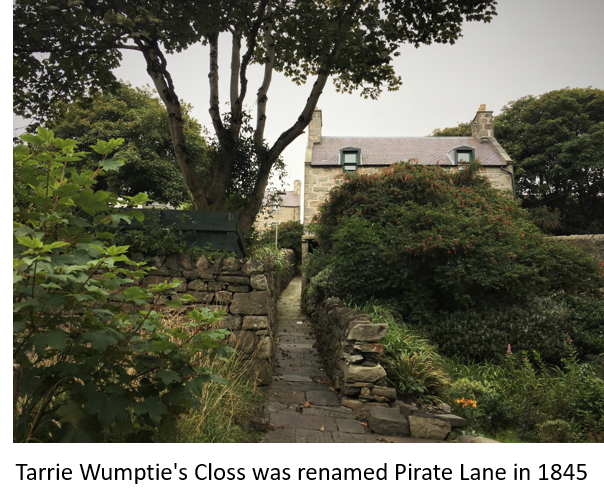
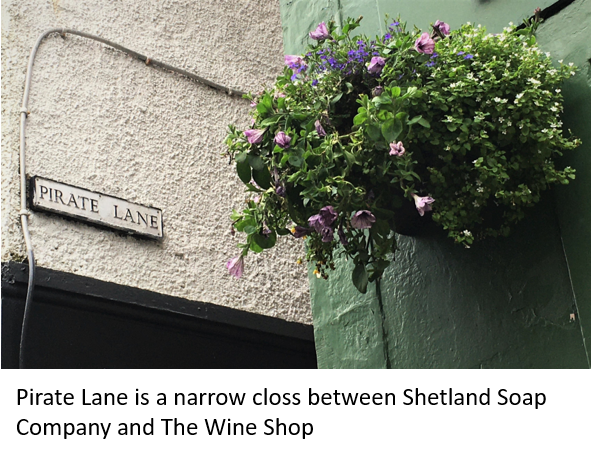
Scott had visited Shetland in 1814 with his friend Robert Stevenson, who designed Sumburgh Lighthouse, and was so taken with place he chose Sumburgh as the setting for his novel about a shipwrecked pirate based on the real-life Orkney pirate, John Gow. Scott saw the ruins the Earl Patrick Stewart’s manor house at Sumburgh and renamed it Jarlshof to reflect the Norse influence on the isles. The name from the pages of his book eventually stuck and is now used for the whole archaeological site.
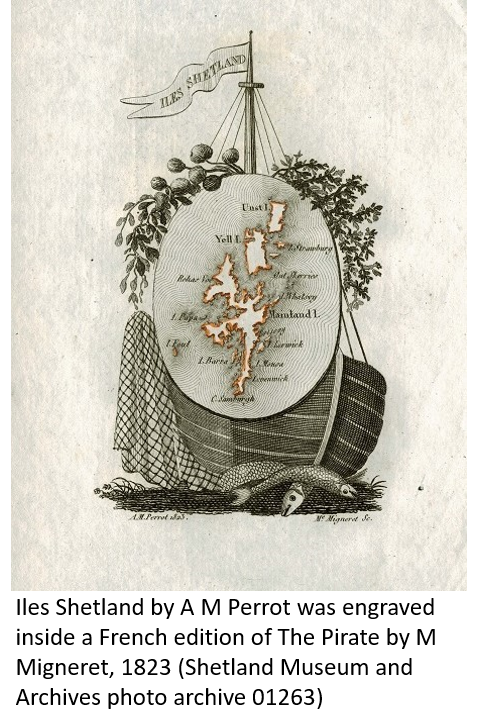
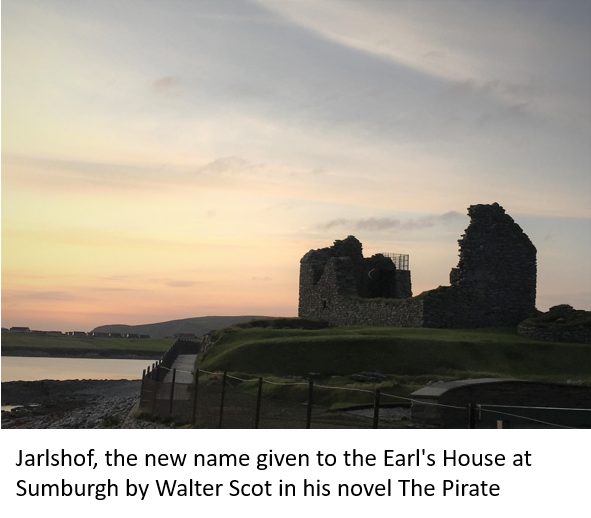
Moving to Unst, Stewart’s cousin Andrew Bruce was left destitute when pirates from Dunkirk, acting on behalf of the Spanish Empire, attacked and burned down his grand home at Muness Castle in 1627. The family did not recover financially from this attack and the house was sold in 1718 and later abandoned; the inventory lists a parcel of old pewter, one old small kettle, a parcel of old leather and timber chairs.
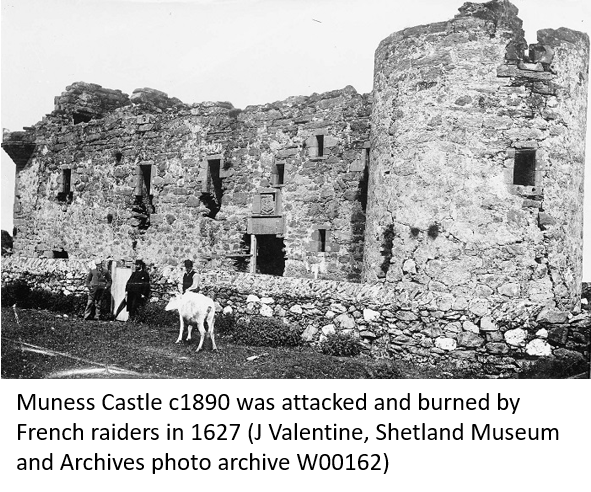
Our pirate pursuit ends in North Roe with the sorry tale of Jacob Stays. An account describes how in early winter 1774, the natives were surprised to witness a large masted ship anchoring in the voe. The ship carried sixteen guns and it soon transpired it was a pirate ship. Some of the crew came ashore for water and provisions, but the locals were not allowed anywhere near the ship. The lawless crew eventually took the law into their own hands against one of their number – an inveterate thief who could not be restrained anywhere on board. The crew bound him, brought him ashore and buried him alive, much to the horror of the local folk. The exact site of the grave of Jacob Stays at Roermill is unclear, but his ghost is said to haunt the valley at nightfall!
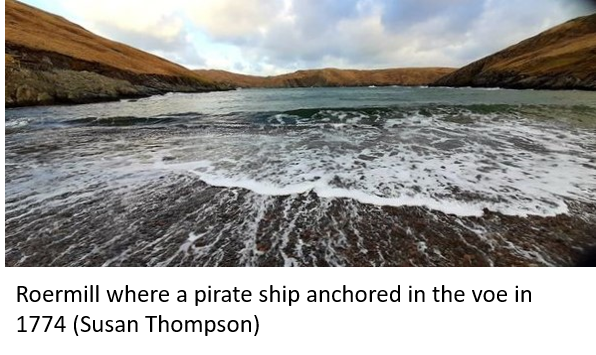
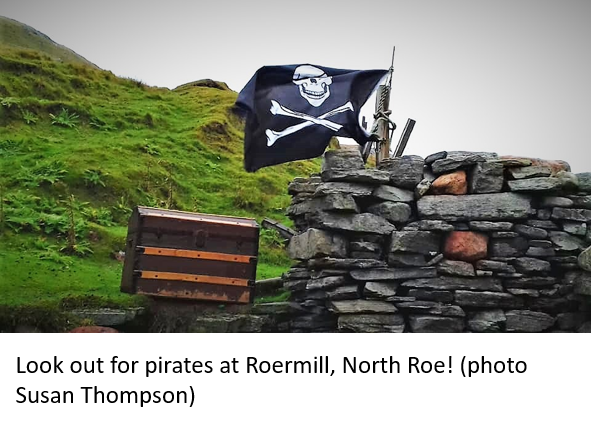
Please contact us if you have any more stories relating to pirates in Shetland by emailing placenames@shetlandamenity.org
Eileen Brooke-Freeman, Shetland Place Names expert
We hope you have enjoyed this blog.  We rely on the generous support of our funders and supporters to continue our work on behalf of Shetland. Everything we do is about caring for Shetland's outstanding natural and cultural heritage on behalf of the community and for future generations. Donations are welcomed and are essential to our work.
We rely on the generous support of our funders and supporters to continue our work on behalf of Shetland. Everything we do is about caring for Shetland's outstanding natural and cultural heritage on behalf of the community and for future generations. Donations are welcomed and are essential to our work.

